Phillips de Pury & Company Announces Spectacular Results from the New York Photographs Auction
Richard Avedon, Marlene Dietrich, Turban by Dior, The Ritz, Paris, August, 1955. Estimate $10,000-15,000. Sold $11,250.
NEW YORK, NY.- Phillips de Pury & Company’s Photographs sale at 450 Park Avenue, comprising 260 lots, sold 94.5% by value and 90.4% by lot totaling $5,802,250 (including premium).
Phillips de Pury & Company finalizes the New York Photographs week with outstanding results that confirm the Photographs Department status as a leader in the photographs market across the classic and contemporary spectrums.
The inaugural Photographs Auction Day was launched with an insightful Photographs Aficionado Class, followed by Chief Auctioneer Simon de Pury’s masterful conducting of a most dynamic auction that was hugely successful in attracting over 400 clients, and enhanced by the opportunity to receive an individual digital portrait by contemporary fashion and entertainment photographer Sophie Elgort. Collectively, the series of events generated a strong and unmistakable buzz across the photographs world.
“I am thrilled with the results of our inaugural Photography Sale on Park Avenue, which allowed us to achieve an excellent total and to break many records.” Simon de Pury, Chairman and Chief Auctioneer, Phillips de Pury & Company.
“We are tremendously excited with the results that reflect our dedication to offer the best in classic and contemporary photographs. We broke a great number of world auction records for emerging and established photographers, which speak of sellers’ confidence in offering top-quality works as well as buyers’ confidence in aggressively pursuing them. Today’s results are a testament to our commitment to the field of photographs.” Vanessa Kramer, Worldwide Director, Photographs.
Lot 171. Cindy Sherman, Untitled #278, 1993. Estimate $200,000-300,000. Sold $242,500.
PROVENANCE Metro Pictures, New York
LITERATURE Durand, Regis & Flammarion, Cindy Sherman, pp. 169, 252; Jeu de Paume, Cindy Sherman, n.p.
NOTE Cindy Sherman's Untitled #278 is a culmination of four successive oeuvres in which the renowned photographer challenges and debunks the constructs of female identity and its network of associations. In her first lauded body of work, Untitled Film Stills (1977-1980), Sherman positioned herself after roles culled from B-movies, horror flicks and film noir. By referencing seemingly familiar female protagonists, Sherman drew attention to repeated patterns in female depiction. The characters allocated to women, her photographs collectively imply, had become nothing more than "prepackaged identities" (Taylor, Rosalind Krauss, Art & Text, p. 33) created by male filmmakers and
marketed to male viewers. It is befitting, therefore, that for her next body of work, Sherman looked to another source of male-oriented entertainment in which female depiction was tightly controlled, men's magazines.
By playing the role of photographer and centerfold in Centerfolds (1981), Sherman granted herself the autonomy notably absent from the women depicted in men's magazines. Her alleged vulnerability, innocence and potential victimhood became clichés of femininity. Up until then, for the producer of the female archetype- be it forlorn lover, naïf hitchhiker, damsel-in-distress, small town girl in the city, etc.- the nominal task had been to create universally accepted parameters within which women were
recognized, classified and accordingly treated. However, for the decipherer of the female archetype, a role which Sherman occupied to its fullest extent, the primary responsibility was to reveal the artificiality underlying archetypes.
Following the latter series, Sherman continued her deconstruction of female archetypes with History Paintings (1989-1990). Sherman recreated iconic works of art, all by the hand of men, and thence assumed both the traditionally male active role of the artist and the historically female passive role of the sitter. Through the heavy-handed reliance on prosthetics, especially the paragon of female form and fertility- breasts, Sherman teetered between theatrical playfulness and audacious critique. That the
works portray Sherman inevitably classifies them as self-portraits; but being under the guise of (real and imagined) women of a different culture, era and class, collapses the scaffolding of verity and authenticity upholding said category. A true self, Sherman appears to say, is an invented one.
Untitled #278 was created in 1993, ten years after Sherman's work on the series Fashion (1983), from which it draws the most inspiration. The original purpose of Fashion was commercial, as Sherman had been commissioned to create a number of ads for designer and retailer Dianne Benson. Eschewing the glamorized and hyper-celebratory depictions of women in fashion magazines, Sherman opted to highlight the antithetical: her subjects appeared itchingly uncomfortable in their clothes; their facial expressions were that of rage, depression, discomposure; their bodies fluctuated between ostentatious awkwardness and angry rebellion. In her notes for the photo shoot, Sherman noted that she wanted her figures:
"...End of night - ...Fat Person...Shooting up, snorting coke (But clothes perfect looking)...Contorted poses-as in exercizing view through arms, legs, twisted...-Bleeding, dying, etc...Skin colors: green, gold, silver, Black, Gray...hairy hands, Afro? hairy chest, arms...stupid looking model-types (but ethnic-dirty.)"
Sherman further noted that her intention was to "Attack clothes, Ugly person (face/body) vs. fashionable clothes." The flipping from flattery to attack reflected Sherman's relationship not with the clothes in which her characters were dressed, but the ideology to which they were inextricably linked.
Untitled #278 deftly references all of the aforementioned series in its continued exposure and deconstruction of female identity. In keeping true to her 1983 Fashion notes, Sherman's body is contorted as though different limbs had been pulled, twisted, broken and tugged to match a predetermined vision of beauty. Her knees are bloodied, her ankles are wounded and her legs are semi-splayed-she is the quintessential fashion victim. The gold lamé dress does not complement her figure as its tight bunching along her chest and midsection evoke notions of bondage and suffocation. Sherman's heavy kabuki-style makeup, combined with the heavy wig, the hair sticks, the Oriental rug, the Chinese market-find umbrella and the chintzy interiors all refer to the exaggeratedly constructed nature of the mise-en-scene. In revealing the scene's mismatching elements, like forced-together jigsaw puzzle pieces, Sherman masterfully and unabashedly reveals her awareness of the empty shell comprising archetypes-and in full control doing so.
Lot 211. Desiree Dolron, Xteriors VI, 2003. Estimlate $40,000-60,000. Sold $194,500.
PROVENANCE Michael Hoppen Gallery, London
LITERATURE Institute Néerlandais, Desiree Dolron: Exaltation, Gaze, Xterior, p. 107
NOTE As a contemporary Dutch photographer, Desiree Dolron’s series, Xteriors visually references the long and lush history of Flemish painting, most notably in the sense of mystery imbued in its portraiture and its reliance on atmospheric lighting. Using the tools of contemporary technology, Dolron created a body of work that is both reflective of past traditions and innovative in its production. Set in an 18th century mansion in Utrecht, the photographs that comprise Xteriors are digital constructions taken from a
variety of sources. As we see in both Xteriors VI and Xteriors XI, (lot 216), her use of digital manipulation is extensive yet subtle; obvious yet indiscernible. Manipulating faces, details and, most apparently, the dramatic lighting, Dolron uses photography as a means of realizing her vision and, in doing so, intertwines the histories of painting and photography to create a striking tableau, defying the boundaries of both mediums. As a contemporary Dutch photographer, Desiree Dolron’s series, Xteriors visually references the long and lush history of Flemish painting, most notably in the sense of mystery imbued in its portraiture and its reliance on atmospheric lighting. Using the tools of contemporary technology, Dolron created a body of work that is both reflective of past traditions and innovative in its production. Set in an 18th century mansion in Utrecht, the photographs that comprise Xteriors are digital constructions taken from a
variety of sources. As we see in both Xteriors VI and Xteriors XI, (lot 216), her use of digital manipulation is extensive yet subtle; obvious yet indiscernible. Manipulating faces, details and, most apparently, the dramatic lighting, Dolron uses photography as a means of realizing her vision and, in doing so, intertwines the histories of painting and photography to create a striking tableau, defying the boundaries of both mediums.
Lot 145. Robert Frank, Café-Beaufort, South Carolina, 1955. Estimate $40,000-60,000. Sold $182,500.
Gelatin silver print, printed 1960s, flush-mounted. 12 1/2 x 18 3/4 in. (31.8 x 47.6 cm). Signed, titled 'South Carolina' and dated in ink on the recto.
PROVENANCE Pace/MacGill Gallery, New York
LITERATURE Green, American Photography: A Critical History, 1945 to the Present, p. 90; National Gallery of Art, Washington/Steidl, Looking In: Robert Frank's The Americans, p. 236; Scalo, The Americans, pl. 22
NOTE In his introduction to Robert Frank’s seminal book, The Americans, Jack Kerouac wrote, “…he will definitely be hailed as a great artist in his field. After seeing these pictures you end up finally not knowing any more whether a jukebox is sadder than a coffin. That’s because he’s always taking pictures of jukeboxes and coffins—and intermediary mysteries…” As one of the keenest observers of the discrepancies underlying the social, cultural, political, economic, and perhaps most notably—racial relations, Robert Frank’s compilation of 83 images in The Americans collectively expose a narrative that had been considered taboo and outright invisible. In Café-Beaufort, South Carolina, a jukebox, an emblem of American leisurely pastime and 50’s Pop culture, is propped in a stark setting, aloofly towering on the far left side of the scene. An unattended African American baby aimlessly crawls nearby. The image reminds viewers of the racial dynamics that still typified the country at the time, where African Americans’ access to the world of entertainment was still severely limited. That the subject is a baby hints at the intergenerational legacy of the unbalanced dynamic and captures Frank’s astute social awareness.
Lot 94. Irving Penn, Miles Davis hand and trumpet, New York, July 1, 1986. Estimate $25,000-35,000. sold $122,500.
PROVENANCE Howard Greenberg Gallery, New York
Lot 50. Peter Beard, Tsavo North on the Athi Tiva, circa 150 lbs. - 160 lbs. side Bull Elephant, February, 1965. Estimate $50,000-70,000. Sold $120,100.
Gelatin silver print with affixed color coupler prints, printed later. 48 3/8 x 79 3/4 in. (122.9 x 202.6 cm). Signed, titled, dated and annotated in ink on the recto; The Time Is Always Now copyright credit stamp on the reverse of the frame.
PROVENANCE The Time is Always Now Gallery, New York; Sotheby’s, New York, 8 April 2008, lot 289
Lot 48. Irving Penn, Woman in Palace (Lisa Fonssagrives-Penn), Marrakech, Morocco, 1951. Estimate $80,000-120,000. Sold $112,900.
Selenium-toned gelatin silver print, printed 1992. 15 3/8 x 15 1/4 in. (39.1 x 38.7 cm). Signed, initialed, titled, dated in ink, Condé Nast copyright credit reproduction limitation, credit and edition stamps on the reverse of the mount. One from an edition of 40.
LITERATURE Art Institute of Chicago, Irving Penn: A Career in Photography, pl. 24; Hall-Duncan, The History of Fashion Photography, p. 146; Smithsonian Institute, Irving Penn: Master Images, p. 42; Thames & Hudson, Lisa Fonssagrives: Three Decades of Classic Fashion Photography, p.10; American Vogue, January 1952, pp. 132-133
Lot 92. Robert Mapplethorpe, Flag, 1987. Estimate $70,000-90,000. Sold $110,500.
PROVENANCE Acquired directly from the artist
NOTE In the late 1970s, Robert Mapplethorpe was photographing some of the most iconic and controversial images of his career from Jim and Tom, Sausalito, 1977 to Self-Portrait, 1978. It is no wonder then, that his American Flag, 1979 would be similarly provocative, documenting a raised tattered flag, an act, which, while not illegal, was certain to incite debate. When Mapplethorpe returned to the subject eight years later, just two years before his death, his approach was noticeably more ambiguous. As we see in the present lot, while his interest in classical iconography remained, gone from Flag, 1987 was the controversial undertone that the world had come to expect of him. Instead, Mapplethorpe’s tone was that of a quiet self-reflection, motivated by the artist’s solemn awareness of his own imminent mortality. One cannot help but wonder if with Flag, 1987, Mapplethorpe finally created an image universal in its appeal.
While the prints from the edition of 10 have a horizontal orientation, this variant from outside the edition is alternatively cropped in a square format.
Lot 195. David Hockney, Walking in the Zen Garden at the Ryoanji Temple, Kyoto, Feb 21st, 1983. Estimate $35,000-55,000. Sold $108,100.
LITERATURE Arts Council of Great Britain, Hockney's Photographs, p. 28; Knopf, Camera Works: David Hockney, pl. 104; Nishimura Gallery, David Hockney: New Work with a Camera, pl. 11
NOTE By the late 1960s, David Hockney had firmly established his reputation as a leading figure in the Contemporary Art world. With a California backdrop, his portraits of friends and lovers came to define West-Coast American painting, and while photography had always played an integral role in this work as source material, it was not until the 1970s that Hockney began experimenting with the photograph itself as a work of art. His earliest photo-based works or “joiners,” were grids of photographs that together comprised the singular image that he intended. In 1982 he created his first photocollage.
Combining various vantage points, Hockney’s photocollages depict comprehensive scenes that transcend the traditional limits of photography and representational art. Both visually and conceptually, they reference Pablo Picasso and his strong influence on Hockney: the repetition of the 4 x 5 in. photographs provides the geometric aesthetic of Cubism, while Hockney’s layering of image upon image provides the fluidity and three dimensional space that was at the heart of Picasso’s work. But beyond this, as the artist himself noted in an interview with Lawrence Weschler, what interested Hockney most was the way these photocollages present the world in a manner much closer to the complex way in which we see and interpret our surroundings: “I realized that this sort of picture came closer to how we actually see, which is to say, not all-at-once but rather in discreet, separate glimpses which we then build up into our continuous experience of the world.” (Knopf, Camera Works: David Hockney, p. 11)
In Walking in the Zen Garden at the Ryoanji Temple Kyoto, Feb. 21st, 1983, all of Hockney’s ideas and intentions for his photocollages come to fruition, with each of the approximate 130 photographs serving as a brushstroke on this alternate canvas. Individually, they are abstracted, revealing only a portion of the scene; but together they create a cohesive atmospheric sense of space that conveys not only the image but the experience of Hockney’s journey through the garden. From the details of Hockney’s footsteps that border the bottom edge to the sculptural surface of the isolated rocks in the distance and the delicate play of light and shadow, Hockney’s photocollage demonstrates a continuation of the artistic interest seen throughout his paintings.
Lot 33. Robert Frank, Paris New Year (Young Man with Tulip), 1949. Estimate $40,000-60,000. Sold $104,500.
PROVENANCE Howard Greenberg Gallery, New York
LITERATURE National Gallery of Art, Washington/Steidl, Looking In: Robert Frank's The Americans, p. 103 there titled and dated Tulip/Paris, 1950; National Gallery of Art, Washington/Scalo, Black White and Things, pl. 21; Pantheon Books, Robert Frank: The Lines of My Hand, n.p. there titled January 1st
NOTE Shortly after their marriage in 1949, Robert Frank and Mary Lockspeiser spent 10 months in Paris, during which the aspiring photographer documented everyday moments, people and scenes. Perhaps inspired by André Kertész’s book Day of Paris, 1945, which celebrated the charm in the small, unassuming post-World War II Parisian lifestyle, Frank assembled the preliminary layout for Mary's Book, an unpublished book comprised of 74 photographs reflective of their experience following their Parisian trends. The book is devoid of any stereotypically Parisian images as Frank turned his lens to commemorate understated moments that might have otherwise been overlooked. Namely, a lonesome streetlamp; cropped billboards; a blind street musician; and a substantial number of empty chairs strewn outdoors, which attest to recent human activity. Mary's Book was not meant to be a didactic tour of Paris, but an intimate journal of impressions shared with his beloved wife. Paris New Year (Young Man with Tulip), was taken during that time.
Following his endeavors on Mary's Book, Frank met Edward Steichen, by whom he was deeply influenced. At the time, Steichen as Director of Photography at the Museum of Modern Art, was deeply involved with The Family of Man exhibition, paying homage to universal commonalities over individual differences. The motive had a strong impact on Frank, who was encouraged to expose and infuse the “feel and atmosphere of his subjects” in his photographs. The result was Frank’s fourth book: Black White and Things. The book discussed “somber people and black events, quiet people and peaceful places, and the things people have come in contact with.” In that regard, Frank, too, looked for overarching themes, although his message was free of the charged sentimentality and heavy-handedness that typified Steichen’s exhibition. The images chosen for the book had all been taken between 1947 and 1952. Paris New Year (Young Man with Tulip), was in the “Things” section alongside images of a statue,
religious medals, Christ on a cross, a balloon from a Macy’s parade, and a doll in a plastic bag. In doing so, Frank commented on people’s faith—in love, religion, art and commerce. The image is subtle in its irony, gentle in its romance, and poignant in its message.
Lot 206. Florian Maier-Aichen, Untitled, 2005. Estimate $80,000-120,000. Sold $104,500.
Color coupler print, Diasec mounted. 69 x 89 1/2 in. (175.3 x 227.3 cm). Signed and numbered 6/6 in ink on the reverse of the frame.
PROVENANCE 303 Gallery, New York; Private Collection, New York
LITERATURE Museum of Contemporary Art, Los Angeles, Florian Maier-Aichen, p. 14
NOTE In his massive-scale vistas, Florian Maier-Aichen appropriates and adds a contemporary approach to the Romantic period’s philosophy of the Sublime. In contrast with discussion of the Beautiful, discourse surrounding the Sublime was distinguished by its dual invocation of horror and delight, at once appearing as menacing, ominous and terrifying as inspiring, humbling and invigorating. Emphasis was on the tremendous, overpowering effect of nature, and the diminishing proportion of Mankind by comparison. Mt. Williamson, the second highest mountain in California, is shown triumphantly hovering over the subdued urban grid sprawled at its feet, its electric blue aura emitting a sci-fi glow across the sky, evoking a mesmerizing sense of awe in grandeur, timelessness and near-miraculous appearance.

/https%3A%2F%2Fprofilepics.canalblog.com%2Fprofilepics%2F1%2F0%2F100183.jpg)
/https%3A%2F%2Fstorage.canalblog.com%2F03%2F02%2F119589%2F96711876_o.jpg)
/https%3A%2F%2Fstorage.canalblog.com%2F11%2F31%2F119589%2F94773502_o.jpg)
/https%3A%2F%2Fstorage.canalblog.com%2F20%2F83%2F119589%2F94772815_o.jpg)
/https%3A%2F%2Fstorage.canalblog.com%2F26%2F72%2F119589%2F75604929_o.jpg)
/https%3A%2F%2Fstorage.canalblog.com%2F59%2F60%2F119589%2F26458628_o.jpg)


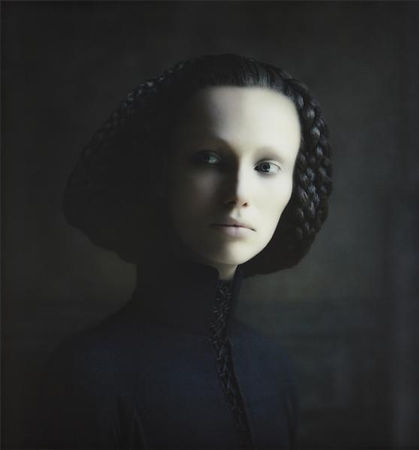
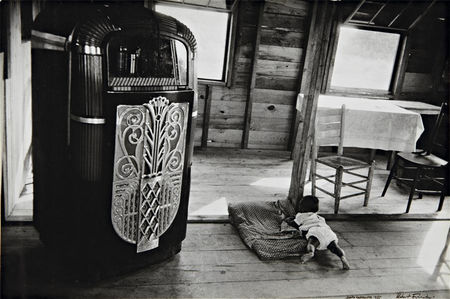
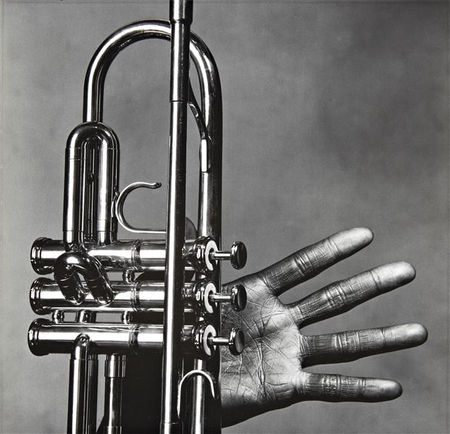




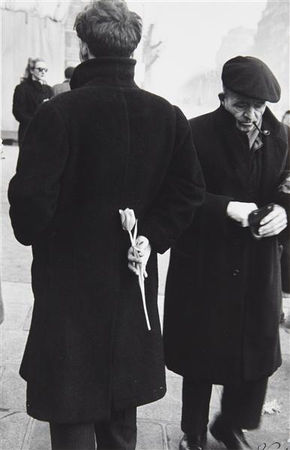
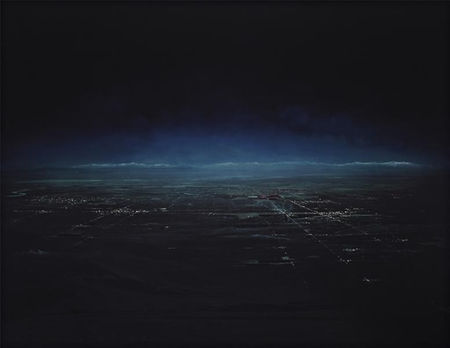


/image%2F1371349%2F20240301%2Fob_cca31e_fonssagrives-lfp-250-scaled-tt-width-2.jpeg)
/http%3A%2F%2Fstorage.canalblog.com%2F35%2F42%2F119589%2F121270345_o.jpg)
/http%3A%2F%2Fstorage.canalblog.com%2F81%2F37%2F119589%2F121192130_o.jpeg)
/http%3A%2F%2Fstorage.canalblog.com%2F20%2F15%2F119589%2F113216766_o.jpg)